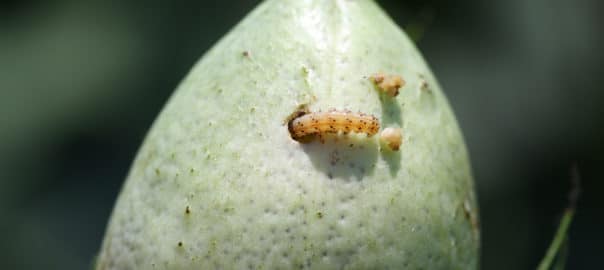Although many of our early maturing fields are out of the woods, I continue to get calls about bollworms (corn earworm) in later maturing cotton and soybean. As a reminder, there are a couple of factors in play that need to be considered.
- Pyrethroid insecticides are not as good at controlling bollworm as they once were, and “failures” may occur. This is especially true when treating high numbers or larger larvae.
- WideStrike and Bollgard II cotton also don’t work as well as they used too, and supplemental insecticide applications will often be needed when facing high pressure or a sustained moth flight.
So the question is … when and with what insecticide should applications be made for bollworm? Suggested treatment thresholds have not changed, but the choice of product and the need to time applications correctly is more important. We should not be surprised that technologies that have been around 20+ years are “slipping”. Don’t be a denier!
COTTON – The diamide insecticides (Prevathon, Besiege) are the new “standard” for controlling bollworms in Bt cotton. There are some other options such as Blackhawk and Intrepid Edge, but these products probably won’t provide the same level of residual control or rainfastness. For the original WideStrike technology, which has always been less consistent than Bollgard II at controlling bollworms, I would start by thinking about Prevathon or Besiege. The same is true on Bollgard II cotton under relatively high pressure or on later maturing fields where we would expect sustained pressure. A pyrethroid insecticide + acephate (0.75 lb) still has a fit when facing moderate pressure and especially when you don’t need to protect the crop much longer. If going this route, you should expect to make repeated applications as long as the pressure continues and the crop is susceptible. The need for repeated applications is less likely if you use a diamide insecticide. That is the trade off!
SOYBEAN– A pyrethroid insecticide or a pyrethroid insecticide + acephate MAY provide adequate control of bollworms in soybean, but I would not tempt fate when facing high pressure. I would define high pressure as anything above 1.5X threshold (say 50+ larvae per 100 sweeps ). Because bollworms tend to pick on late maturing fields, and because these same fields are often the ones that often get infested by soybean loopers, I’d suggest avoiding the pyrethroid insecticides. Pyrethroids will not control soybean looper and may actually make infestations worse by killing beneficial insects.
It is unusual in Tennessee to need repeated applications for bollworms in soybean, so residual control in less important than in cotton. Blackhawk (1.7-2 oz), Intrepid Edge (4-5 oz), and Prevathon (14 oz) are obvious options for controlling bollworms in soybean while not creating potential problems down the road with soybean loopers. Another option I suggest trying on some fields is Heligen. This is a virus specific to bollworm. In most tests, it has provided good control in soybean and sorghum. It has the advantage of being inexpensive, and it won’t kill beneficial insects. Also, once an infection gets going, it can continue to persist and cycle through the population over time. However, applications need to made when most larvae are relatively small. I would not use Heligen if most of the population consists of medium or large sized worms or when infestations are way above threshold. I think it has a nice potential fit in the river bottoms where we often get corn earworms in late maturing fields of soybean.


